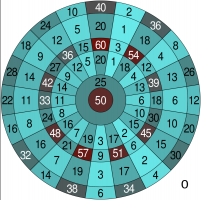Hi,
I need some help on my maths homework. It is about darts. I need to investigate the difficulty of achieving an outshot of 141 in a game of 501.
- Display the sample space
- Describe the events (possible outshots of 141)
- Calculate the probability of achieving each of the possible out shots with a score of 141
I need some help on my maths homework. It is about darts. I need to investigate the difficulty of achieving an outshot of 141 in a game of 501.
- Display the sample space
- Describe the events (possible outshots of 141)
- Calculate the probability of achieving each of the possible out shots with a score of 141

